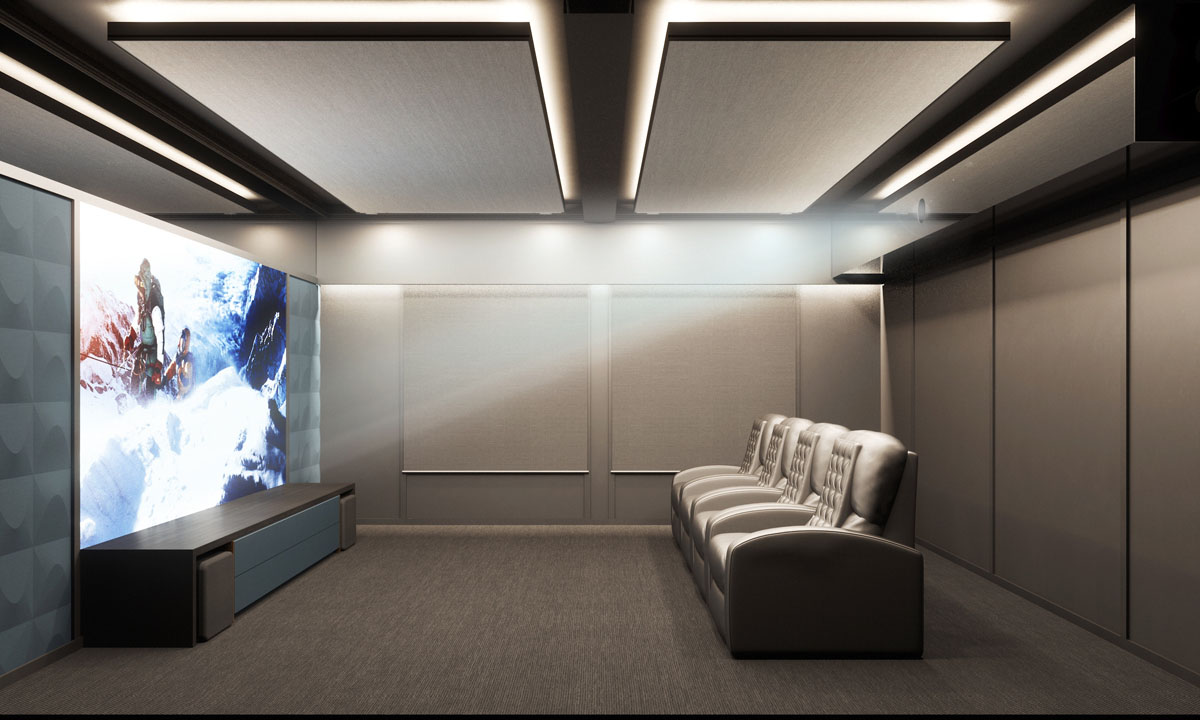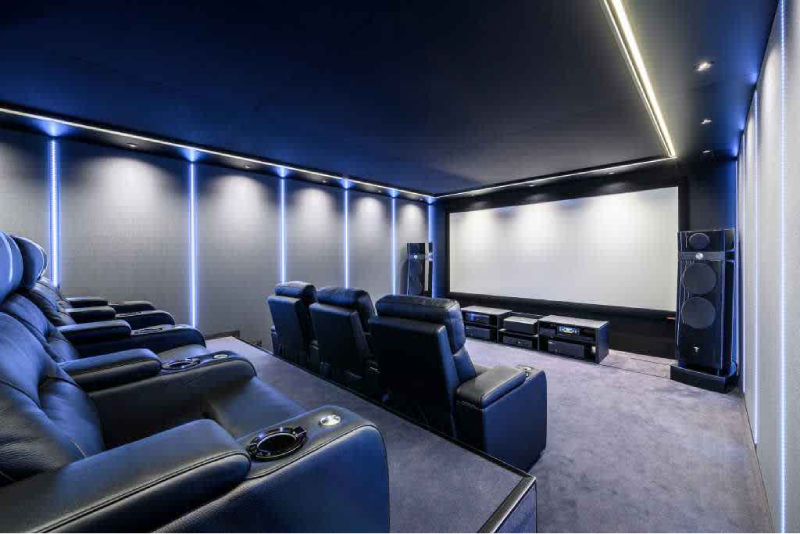Why Tampa Home Theater Installation Is a Life-Changer for Your Viewing Experience
Why Tampa Home Theater Installation Is a Life-Changer for Your Viewing Experience
Blog Article
Home Theater 101: Whatever You Need to Know for a Motion Picture Experience in your home
Developing a home movie theater that matches the cinematic experience of a commercial theater includes mindful factor to consider of several parts, consisting of screen selection, sound systems, and room design. Each component plays a pivotal function in attaining the desired setting and capability. Whether you are considering the optimal display size or the intricacies of border audio, comprehending these basics is vital. As we explore these essential parts, it becomes noticeable that the choices made can considerably impact your overall viewing experience, leaving one to contemplate how these decisions will shape your personal cinema.
Choosing the Right Screen
When establishing a home theater, picking the ideal screen can make or damage the seeing experience - tampa home theater. The display acts as the focal point of your arrangement, affecting photo high quality, viewing angles, and overall aesthetic. Key factors to consider consist of display type, dimension, and resolution
Initially, figure out the suitable screen dimension based on your room measurements and seating distance. Next off, pick in between numerous display types, such as fixed-frame, motorized, or retracting displays, each offering distinctive benefits.
Resolution is an additional vital aspect. For a genuinely immersive experience, think about a screen created for 4K and even 8K web content, making certain intensity and clarity. Additionally, take into consideration the display's gain, which impacts brightness and contrast; a greater gain can enhance brightness in well-lit areas, while a lower gain may be much more suitable for darker settings.
Picking Audio Equipment
Audio tools is an important part of any kind of home theater system, considerably boosting the general viewing experience. The selection of audio gear can figure out the depth, quality, and immersion of noise, crucial for producing a cinematic environment.
When selecting audio tools, take into consideration a surround stereo, which commonly includes a receiver, numerous speakers, and a subwoofer. A 5.1 or 7.1 network system is recommended, where the initial number represents the speakers and the second the speaker, supplying an immersive soundscape. The receiver is the heart of the system, managing audio and video signals, and ought to sustain modern-day layouts like Dolby Atmos for a boosted spatial experience.
Quality speakers are essential; try to find models that offer a well balanced sound account with great bass response. Floor-standing audio speakers can create richer audio, while bookshelf options save room. In addition, consider wireless alternatives for ease of setup, although wired systems frequently supply superior efficiency.

Optimum Seating Plans
Creating a suitable home movie theater experience pivots dramatically on ideal seating arrangements. The arrangement of seats plays an important duty in both convenience and seeing high quality, straight affecting the total motion picture experience.
First, take into consideration the screen size and seeing distance. An usual standard see post is to place seats at a distance roughly 1.5 to 2.5 times the angled size of the display. This makes certain an immersive experience without straining the eyes.
Next, elevation is essential. If your seats remains in a tiered layout, the back rows ought to be greater than the front to prevent blockages. For level seats, make certain that the front row is not too near to the screen, and that everyone has a clear line of vision.
In addition, consider the setup in regards to social dynamics. Group seating can enhance the common experience, while private seats might be chosen for personal viewing.

Lastly, focus on comfort with ergonomic seats that sustains prolonged viewing durations. Integrating reclining chairs or supported seats can substantially boost the experience, making the home movie theater a recommended location for both entertainment and relaxation.
Lighting and Atmosphere
Effective lighting and setting are vital elements of a properly Visit Website designed home movie theater, as they substantially influence the checking out experience. The appropriate illumination can improve the cinematic feeling, while bad selections can detract from it. For optimal results, think about a split lighting approach that includes ambient, task, and accent illumination.
Ambient lighting offers basic illumination, ensuring that the space is not totally dark, which can stress the eyes. Dimmer switches are highly suggested, permitting modifications based upon the content being watched. Task lights, such as wall sconces or flooring lights, provides useful lighting for activities like analysis or browsing the room without disrupting the overall environment.
Accent lighting can be used to highlight building attributes or produce centerpieces, adding depth and interest to the area. LED strip lights behind screens or along shelves can provide a subtle radiance that improves the visual experience without frustrating the audience.

Wiring and Installation Tips
A well-planned wiring configuration is vital for accomplishing optimum performance in your house movie theater system. Correct wiring not only makes certain premium sound and video clip signals however additionally boosts the general aesthetic of your room. Begin by drawing up your design, recognizing where each element will be positioned, including your display, speakers, and receiver.
When choosing cables, focus on top notch, properly gauged circuitry to reduce signal loss. HDMI cords must be utilized for video clip links, while audio speaker cord should match the specs of your audio speakers and amplifier. Decide for in-wall rated cables to abide by safety and security criteria and maintain a clean look.

Conclusion
In summary, creating an exceptional home theater experience requires mindful consideration of various components, including screen choice, audio equipment, seating arrangements, lighting, and circuitry. Each part plays a vital duty in attaining ideal performance and ambiance, ultimately enhancing the pleasure of home amusement. By focusing on these factors, a cinematic ambience can be successfully duplicated, enabling immersive viewing experiences that rival standard theater setups. Attention to detail in each location is essential for total contentment.
Creating a home cinema that rivals the motion picture experience of an industrial theater includes cautious consideration of numerous components, consisting of display option, audio systems, and space layout.When setting up a home theater, choosing the ideal screen can make or break the watching experience. Next, select between various display types, such as fixed-frame, mechanized, or retractable displays, each offering distinct advantages. For a really immersive experience, take into consideration a display created for 4K or even 8K content, ensuring intensity and clarity.In recap, producing a remarkable home cinema experience requires cautious factor to consider of numerous aspects, including display choice, audio equipment, seating plans, illumination, and circuitry.
Report this page